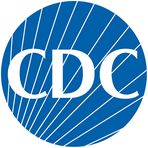Navigating the New Normal: Understanding the Nimbus Variant and Its Impact on Public Health
June 19, 2025, 10:35 am

Location: United States, Georgia, Atlanta
Employees: 10001+
Founded date: 1946
The COVID-19 pandemic has been a relentless storm, reshaping our lives and health systems. As we emerge from the chaos, a new variant, dubbed Nimbus, has entered the scene. This variant has raised eyebrows but also offers a glimpse into the evolving nature of the virus. Let’s unpack what we know about Nimbus and its implications for public health.
Nimbus was detected through airport screenings in the United States. Travelers arriving from specific regions brought this variant to California, Washington, Virginia, and New York. It’s a reminder that the virus is still lurking, adapting, and finding new ways to spread. But how worried should we be?
The World Health Organization (WHO) has classified Nimbus as a “variant under monitoring.” This designation suggests that while it’s on the radar, the immediate threat level is low. So far, there’s no evidence that Nimbus causes more severe illness than previous variants. It’s like a new player in a familiar game, but the rules haven’t changed much.
Vaccines remain our strongest defense. Current COVID-19 vaccines are expected to be effective against Nimbus. This is crucial news. It means that while the virus evolves, our tools to combat it are still sharp. The WHO’s assessment provides a sense of relief. We are not back to square one.
However, the public health landscape is complex. Recent announcements from Health Secretary Robert F. Kennedy Jr. have stirred controversy. He stated that COVID-19 shots are no longer recommended for healthy children and pregnant women. This claim has raised eyebrows among health experts. They argue that such statements can undermine public trust in vaccines. Misinformation can spread like wildfire, and we must be vigilant.
As we navigate this new variant, we must also remember the broader context. The pandemic has left scars on our society. Hospitalizations and COVID cases are rising in some regions, particularly in the western Pacific. The pandemic has been a teacher, revealing gaps in our health systems and the importance of community resilience.
Public health experts emphasize the need for continued vigilance. While Nimbus may not be more dangerous, complacency can be a silent enemy. The virus thrives on our inattention. Masking, social distancing, and vaccination remain essential tools in our arsenal. We must not let our guard down.
The conversation around COVID-19 is evolving. As we learn more about Nimbus, we must also consider the emotional toll of the pandemic. The uncertainty has weighed heavily on many. Anxiety and fear have become common companions. Public health messaging must address these feelings. It’s not just about the virus; it’s about the people affected by it.
Community engagement is vital. Local health departments play a crucial role in disseminating accurate information. They are the front lines in the battle against misinformation. We must support these efforts. Trust in public health is built through transparency and open communication.
As we look to the future, we must also reflect on the lessons learned. The pandemic has highlighted the importance of mental health. The emotional impact of COVID-19 cannot be overlooked. As we face new variants, we must prioritize mental well-being alongside physical health.
Nimbus is a reminder that the pandemic is not over. It’s a new chapter in an ongoing story. We must remain adaptable and informed. The world is changing, and so is the virus. Our response must evolve too.
In conclusion, the Nimbus variant is a call to action. It urges us to stay informed, stay vigilant, and support one another. The pandemic has tested our resilience, but it has also shown our capacity for compassion and community. As we move forward, let’s carry these lessons with us. Together, we can navigate this new normal and emerge stronger on the other side. The storm may not be over, but we are better equipped to face it.
Nimbus was detected through airport screenings in the United States. Travelers arriving from specific regions brought this variant to California, Washington, Virginia, and New York. It’s a reminder that the virus is still lurking, adapting, and finding new ways to spread. But how worried should we be?
The World Health Organization (WHO) has classified Nimbus as a “variant under monitoring.” This designation suggests that while it’s on the radar, the immediate threat level is low. So far, there’s no evidence that Nimbus causes more severe illness than previous variants. It’s like a new player in a familiar game, but the rules haven’t changed much.
Vaccines remain our strongest defense. Current COVID-19 vaccines are expected to be effective against Nimbus. This is crucial news. It means that while the virus evolves, our tools to combat it are still sharp. The WHO’s assessment provides a sense of relief. We are not back to square one.
However, the public health landscape is complex. Recent announcements from Health Secretary Robert F. Kennedy Jr. have stirred controversy. He stated that COVID-19 shots are no longer recommended for healthy children and pregnant women. This claim has raised eyebrows among health experts. They argue that such statements can undermine public trust in vaccines. Misinformation can spread like wildfire, and we must be vigilant.
As we navigate this new variant, we must also remember the broader context. The pandemic has left scars on our society. Hospitalizations and COVID cases are rising in some regions, particularly in the western Pacific. The pandemic has been a teacher, revealing gaps in our health systems and the importance of community resilience.
Public health experts emphasize the need for continued vigilance. While Nimbus may not be more dangerous, complacency can be a silent enemy. The virus thrives on our inattention. Masking, social distancing, and vaccination remain essential tools in our arsenal. We must not let our guard down.
The conversation around COVID-19 is evolving. As we learn more about Nimbus, we must also consider the emotional toll of the pandemic. The uncertainty has weighed heavily on many. Anxiety and fear have become common companions. Public health messaging must address these feelings. It’s not just about the virus; it’s about the people affected by it.
Community engagement is vital. Local health departments play a crucial role in disseminating accurate information. They are the front lines in the battle against misinformation. We must support these efforts. Trust in public health is built through transparency and open communication.
As we look to the future, we must also reflect on the lessons learned. The pandemic has highlighted the importance of mental health. The emotional impact of COVID-19 cannot be overlooked. As we face new variants, we must prioritize mental well-being alongside physical health.
Nimbus is a reminder that the pandemic is not over. It’s a new chapter in an ongoing story. We must remain adaptable and informed. The world is changing, and so is the virus. Our response must evolve too.
In conclusion, the Nimbus variant is a call to action. It urges us to stay informed, stay vigilant, and support one another. The pandemic has tested our resilience, but it has also shown our capacity for compassion and community. As we move forward, let’s carry these lessons with us. Together, we can navigate this new normal and emerge stronger on the other side. The storm may not be over, but we are better equipped to face it.
